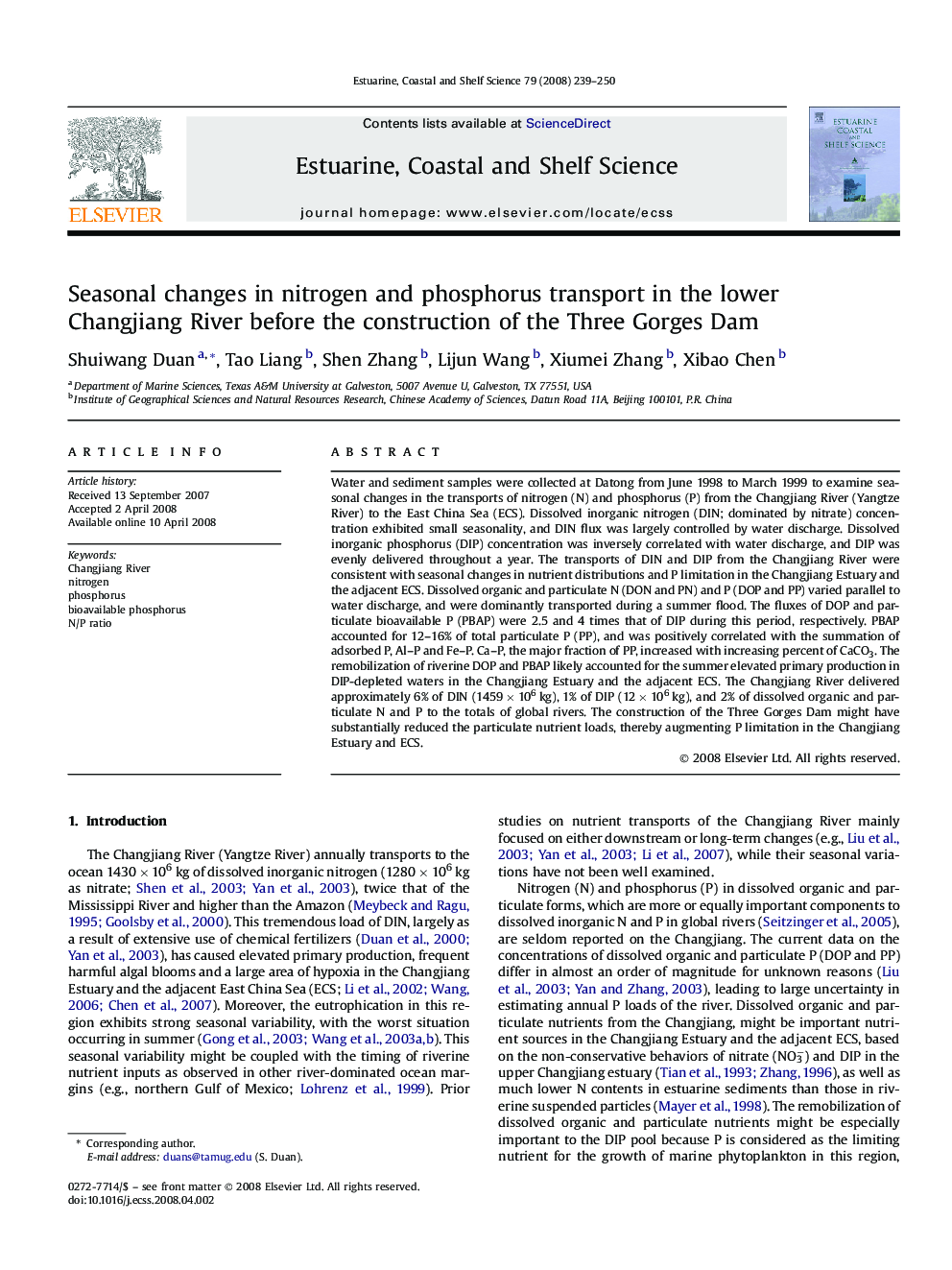| Article ID | Journal | Published Year | Pages | File Type |
|---|---|---|---|---|
| 4541826 | Estuarine, Coastal and Shelf Science | 2008 | 12 Pages |
Water and sediment samples were collected at Datong from June 1998 to March 1999 to examine seasonal changes in the transports of nitrogen (N) and phosphorus (P) from the Changjiang River (Yangtze River) to the East China Sea (ECS). Dissolved inorganic nitrogen (DIN; dominated by nitrate) concentration exhibited small seasonality, and DIN flux was largely controlled by water discharge. Dissolved inorganic phosphorus (DIP) concentration was inversely correlated with water discharge, and DIP was evenly delivered throughout a year. The transports of DIN and DIP from the Changjiang River were consistent with seasonal changes in nutrient distributions and P limitation in the Changjiang Estuary and the adjacent ECS. Dissolved organic and particulate N (DON and PN) and P (DOP and PP) varied parallel to water discharge, and were dominantly transported during a summer flood. The fluxes of DOP and particulate bioavailable P (PBAP) were 2.5 and 4 times that of DIP during this period, respectively. PBAP accounted for 12–16% of total particulate P (PP), and was positively correlated with the summation of adsorbed P, Al–P and Fe–P. Ca–P, the major fraction of PP, increased with increasing percent of CaCO3. The remobilization of riverine DOP and PBAP likely accounted for the summer elevated primary production in DIP-depleted waters in the Changjiang Estuary and the adjacent ECS. The Changjiang River delivered approximately 6% of DIN (1459 × 106 kg), 1% of DIP (12 × 106 kg), and 2% of dissolved organic and particulate N and P to the totals of global rivers. The construction of the Three Gorges Dam might have substantially reduced the particulate nutrient loads, thereby augmenting P limitation in the Changjiang Estuary and ECS.
